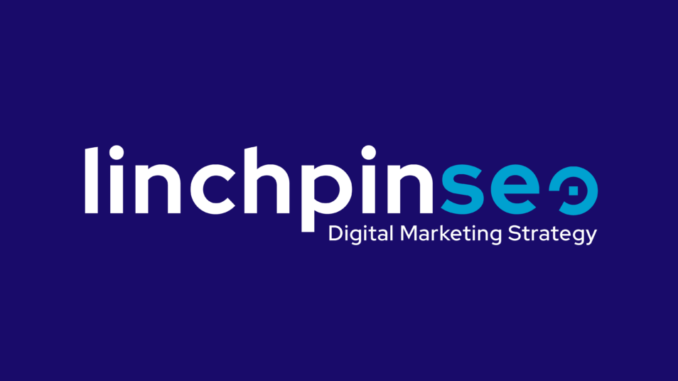
Data has emerged as a pivotal player in the constantly evolving digital marketing landscape, driving decision-making processes and enabling marketers to craft highly targeted and personalized campaigns. Many data sources are available to marketers, offering unique value and insights. However, first-party data is a precious asset amidst this broad spectrum.
Digital marketing refers to using the internet, mobile devices, social media, search engines, and other channels to reach consumers. It is a broad field, encompassing everything from email and content marketing to social media advertising and search engine optimization. However, at the core of all these strategies lies one common element: data. Data helps marketers understand their audience, refine their design, and measure success.
First-party data is information collected directly from your customers and audience. This could include data from behaviors, actions, or interests demonstrated across your website or app, data provided through transactions or information submitted via forms and surveys. As this data is collected directly from the source, it is generally accurate, relevant, and reliable.
The use of first-party data in digital marketing has grown in importance due to its unique qualities and benefits. It offers an unprecedented understanding of customers, enabling businesses to provide more personalized and efficient services and products. In addition, the increasing focus on privacy regulations and changes in third-party cookie policies have made reliance on first-party data beneficial and crucial for many businesses.
In this article, we’ll explore in depth what first-party data is, how to collect and utilize it effectively in your digital marketing strategy, and how it shapes the future of digital marketing. Whether you’re new to digital marketing or a seasoned veteran, this comprehensive guide will provide you with the knowledge and tools to harness the power of first-party data in your marketing efforts.
Understanding First-Party Data
Before we delve into how first-party data can augment your digital marketing strategies, it’s essential to understand the types of first-party data available and why they are crucial assets for businesses.
Do you need digital marketing strategy or web design help?
Types of First-Party Data
Advantages of Using First-Party Data in Marketing
First-party data offers several distinct advantages over other types of data:
As we progress in the digital age, understanding and effectively using first-party data will become increasingly important. It provides information to help businesses tailor their marketing strategies to their audience’s needs and preferences, ultimately driving higher engagement and conversions.
Collecting First-Party Data
Successful data-driven marketing begins with the collection of high-quality, relevant first-party data. The strategies for collecting this data can be broken down into two main categories: direct online interactions and offline interactions.
Direct Interactions
Offline Interactions
CRM and Other Data Management Platforms
Customer Relationship Management (CRM) systems and other Data Management Platforms (DMPs) are essential for organizing and analyzing your first-party data. They allow you to create comprehensive customer profiles, segment your audience, and personalize your marketing efforts. A Salesforce study in 2023 showed that companies using CRM systems effectively saw a 24% increase in sales revenue.
In conclusion, collecting first-party data is a critical step in forming a successful digital marketing strategy. By taking advantage of both online and offline interactions and utilizing powerful tools like CRMs and DMPs, you can collect valuable data about your customers that will enable you to tailor your marketing efforts to their needs and preferences.
Utilizing First-Party Data in Digital Marketing Strategy
Having understood the value of first-party data and explored the various collection methods, let’s delve into how to use this data effectively to augment your digital marketing strategies.
Personalization
Segmentation and Targeting
Predictive Analytics
Integrating first-party data into your digital marketing strategy can drive significant improvements in personalization, audience targeting, and predictive analytics. By leveraging this powerful resource, businesses can forge deeper customer relationships, drive higher engagement and conversions, and ultimately improve their bottom line.
The Future of First-Party Data in Digital Marketing
As digital marketing continues to evolve, first-party data is poised to play an increasingly pivotal role. The future of first-party data is inextricably linked to changes in privacy regulations, technological advances, and consumer attitudes toward data privacy.
The Impact of Privacy Regulations
New Opportunities and Challenges
In the face of changing privacy regulations and technological advances, the future of first-party data in digital marketing is exciting and challenging. Businesses that can navigate these changes and leverage first-party data effectively will be well-positioned to succeed in the evolving digital landscape.
As explored in this article, first-party data has emerged as an indispensable resource in the digital marketing toolkit. Its accuracy, relevancy, and ability to provide deep insights into customer behavior and preferences make it a powerful tool for businesses striving to optimize their digital marketing strategies.
Do you need help with your SEO?
In an era of increased privacy regulations and changing third-party cookie policies, reliance on first-party data has become a strategic advantage and a necessity. Businesses are increasingly shifting towards consent-based marketing practices and becoming more dependent on their data for insights and personalization. A Data & Marketing Association report in 2023 indicated that 82% of businesses consider first-party data to be their most valuable resource for understanding and engaging with customers.
Collecting, analyzing, and utilizing first-party data presents significant opportunities and challenges. New technologies such as AI and machine learning offer unprecedented capabilities to extract meaningful insights from this data. However, as data sources multiply, integrating and unifying data becomes increasingly complex. For example, a 2022 study from Forrester found that businesses effectively integrating their data sources saw a 25% improvement in the effectiveness of their marketing campaigns.
Looking forward, first-party data will continue to play a central role in the evolution of digital marketing. Businesses leveraging this data effectively will be well-positioned to deliver personalized experiences, build stronger customer relationships, and achieve tremendous marketing success. As the digital landscape continues to evolve, one thing remains certain: first-party data is here to stay, and its importance can only be expected to grow.

Leave a Reply